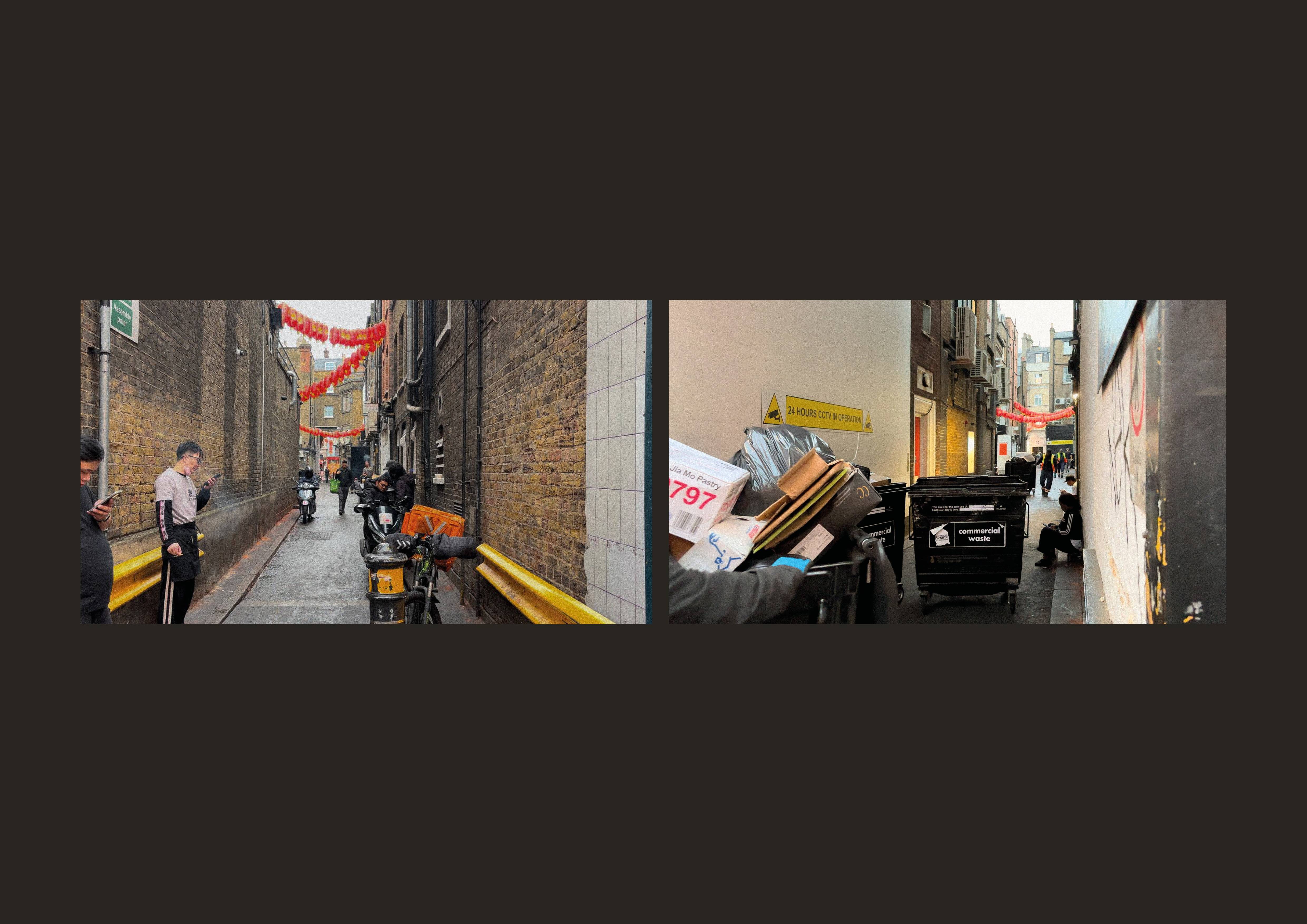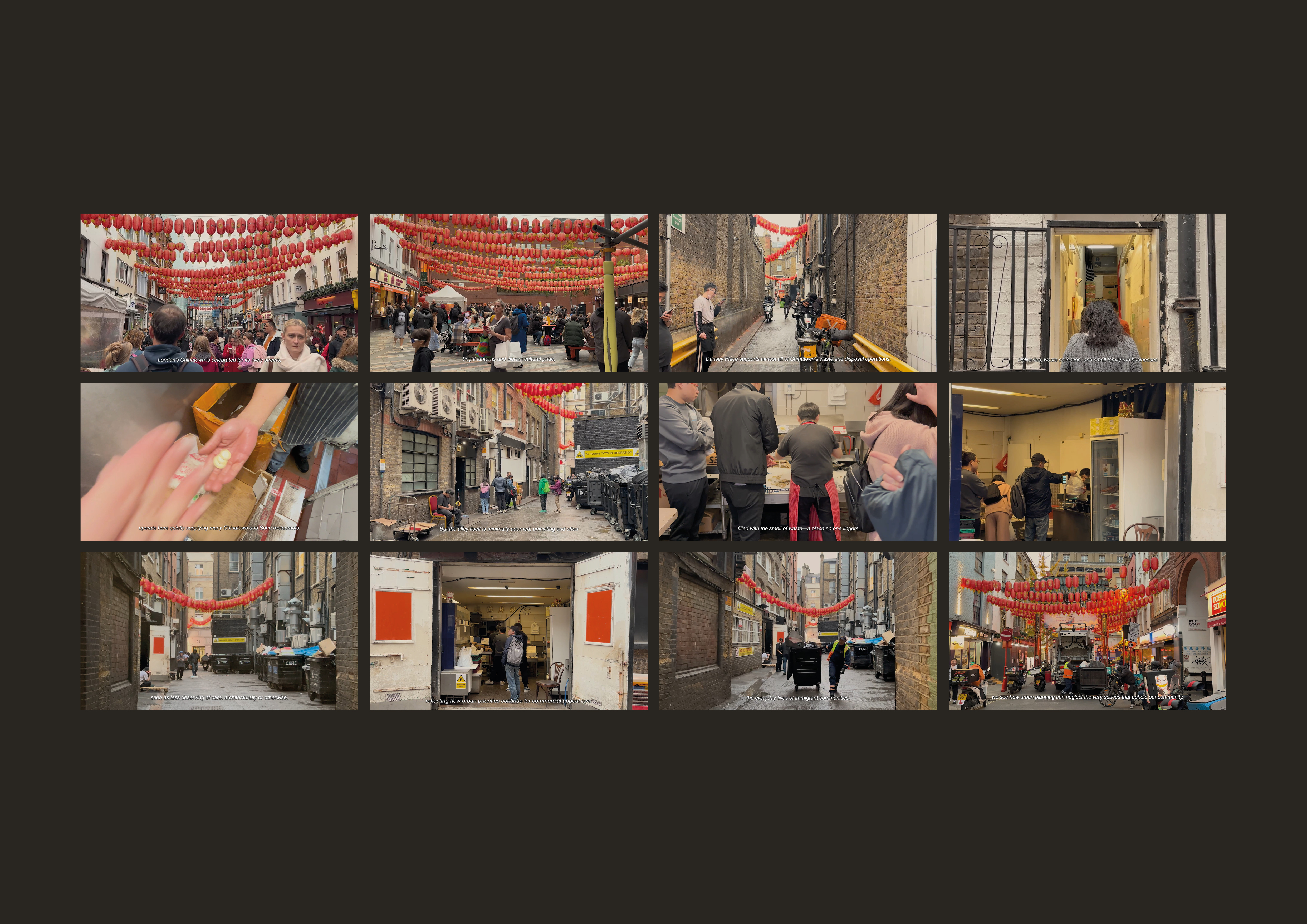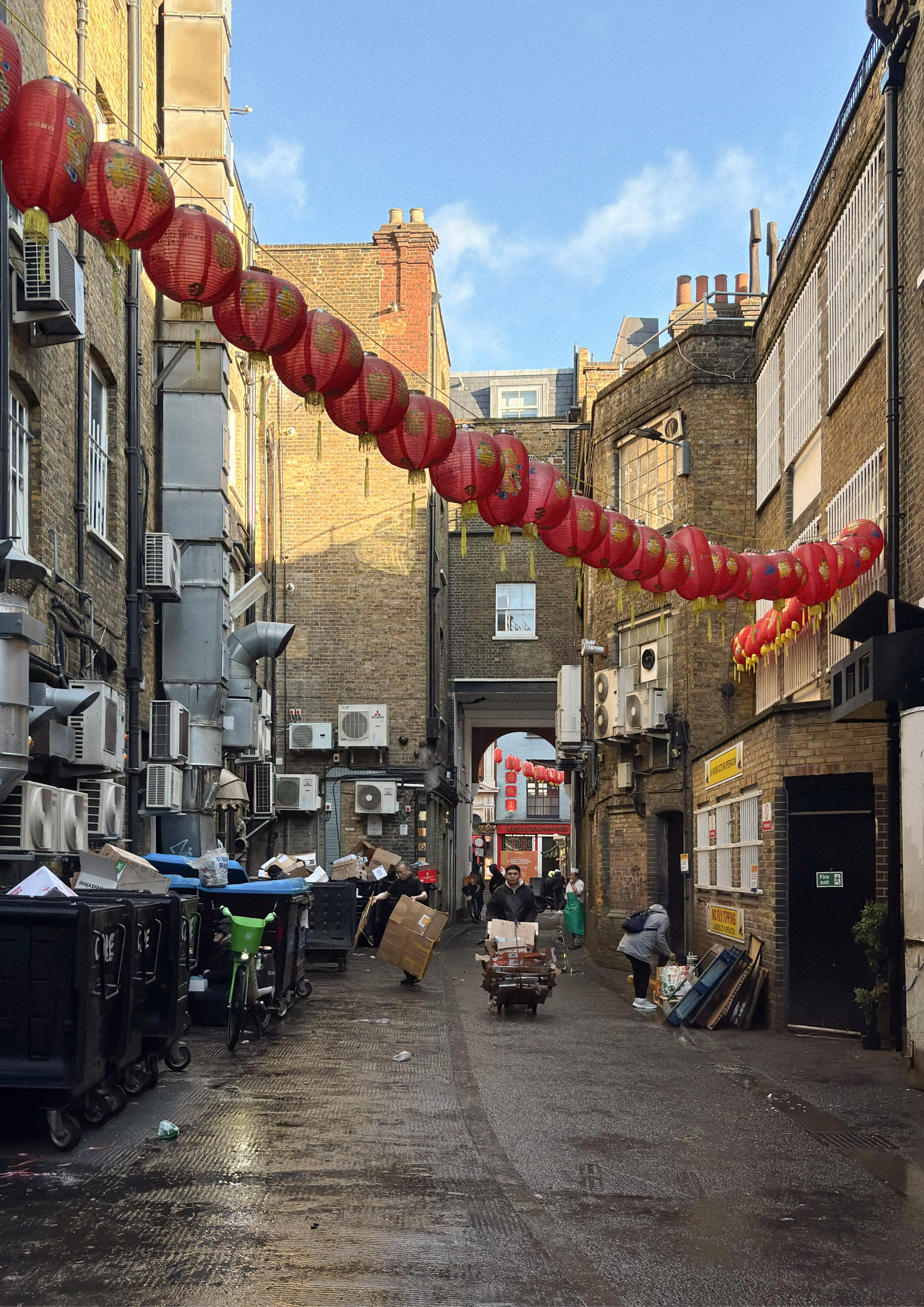Dansey Place hums with a choreography of unnoticed routines. Crates are stacked and unstacked, waste is wheeled in and sorted with intuitive timing, and workers exchange gestures and cigarettes in the narrow margins behind Chinatown’s curated spectacle. Though described in planning documents as unsightly, dingy, and ‘unattractive,’ this alley supports the cultural performance that unfolds just meters away. These scenes, often dismissed as background labour, reveal a vital social and infrastructural system shaped not by regulation but by rhythm, trust, and repetition.
Attending to Dansey Place through presence and observation, this essay reframes it not as a peripheral space but as a site of everyday cooperation. Through the lens of ‘people as infrastructure’ and embodied spatial practice, it traces how meaning and order emerge through informal systems of coordination and care. What unfolds is a quiet critique of planning strategies that prioritise aesthetic order over lived contribution, and package cultural identity for consumption while overlooking the labour that sustains it.
Ethnographic fieldwork reveals how Dansey Place operates as a collaborative engine, tacitly coordinating deliveries, waste disposal, rest, and routine. These micro-interactions form a ritual-shaped infrastructure: a system cultivated through necessity and mutual understanding. In contrast to the polished surfaces of Gerrard Street, the alley offers a different model of urban value, one grounded in maintenance, adaptation, and shared space and time.
Spaces like Dansey Place are not marginal, but expressions of the lived realities that underpin urban life. Recognising their value demands a shift in architectural and planning discourse toward methods that trace what is not shown, hear what is not said, and build from what has long been sustaining the city in plain sight. |



